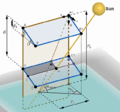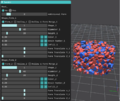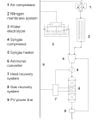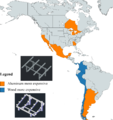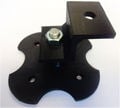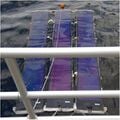
There is an intense need to optimize agrivoltaic systems. This article describes the invention of a new testing system: the parametric open source cold-frame agrivoltaic system (POSCAS). POSCAS is an adapted gardening cold-frame used in cold climates as it acts as a small greenhouse for agricultural production. POSCAS is designed to test partially transparent solar photovoltaic (PV) modules targeting the agrivoltaic market. It can both function as a traditional cold frame, but it can also be automated to function as a full-service greenhouse. The integrated PV module roof can be used to power the controls or it can be attached to a microinverter to produce power. POSCAS can be placed in an experimental array for testing agricultural and power production. It can be easily adapted for any type of partially transparent PV module. An array of POSCAS systems allows for the testing of agrivoltaic impacts from the percent transparency of the modules by varying the thickness of a thin film PV material or the density of silicon-based cells, and various forms of optical enhancement, anti-reflection coatings and solar light spectral shifting materials in the back sheet. All agrivoltaic variables can be customized to identify ideal PV designs for a given agricultural crop.
- Full source Available online: https://osf.io/k6xwv/
- Registration: https://osf.io/acf7h
- OpenSCAD: https://openscad.org/
Keywords[edit | edit source]
additive manufacturing; agriculture; agrivoltaic; distributed manufacturing; farming; gardening; open hardware; photovoltaic; recycling; solar energy
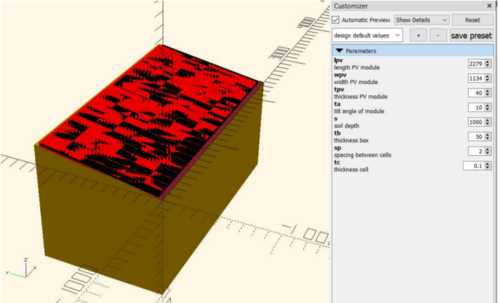
See also[edit | edit source]
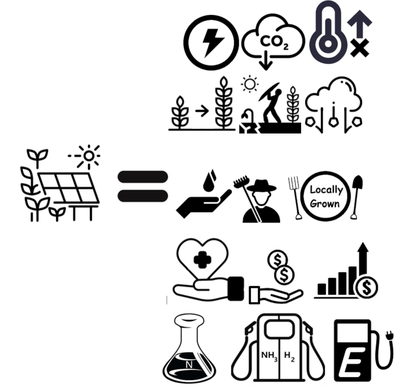
- Coal with Carbon Capture and Sequestration is not as Land Use Efficient as Solar Photovoltaic Technology for Climate Neutral Electricity Production
- Dual use of land for PV farms and agriculture literature review
- sheep
- Israeli white plastic reflectors
- A Farmer's Guide to Going Solar (NREL)
- German guidelines: https://www.ise.fraunhofer.de/content/dam/ise/en/documents/publications/studies/APV-Guideline.pdf
- 2021 review
- Miskin, C.K., Li, Y., Perna, A., Ellis, R.G., Grubbs, E.K., Bermel, P. and Agrawal, R., 2019. Sustainable co-production of food and solar power to relax land-use constraints. Nature Sustainability, 2(10), pp.972-980.
- Retrofitting solar parks for agrivoltaics
- Shading PV
- Alexis' talk at American Solar Grazing Association2021
In the News[edit source]
- Agrivoltaics: solar energy + better crops Climate and Nature
- Why solar power and farmers’ fields could be the perfect combination TVO
- Solar farms and sheep show the makings of a clean energy classic duo Business Renewables
- Agrivoltaics charge up St. Albert-area farms St Albert Gazette
- Sheep, solar and crops. How some Alberta farms are creating ideal growing conditions Western Wheel
- Sheep, solar and crops. How some Alberta farms create ideal growing conditions Voxpopuli
- Protein bars from recycled plastic bottles? An indoor farm on wheels? Western prof gets innovative with green tech Toronto Star
- 加拿大环保狂人回收塑料瓶制成蛋白棒 还有可移动室内农场!? Lahoo
Open Source Photovoltaic Racking Approaches[edit source]
- Ground-mounted
- Roof-mounted
- FPV



















